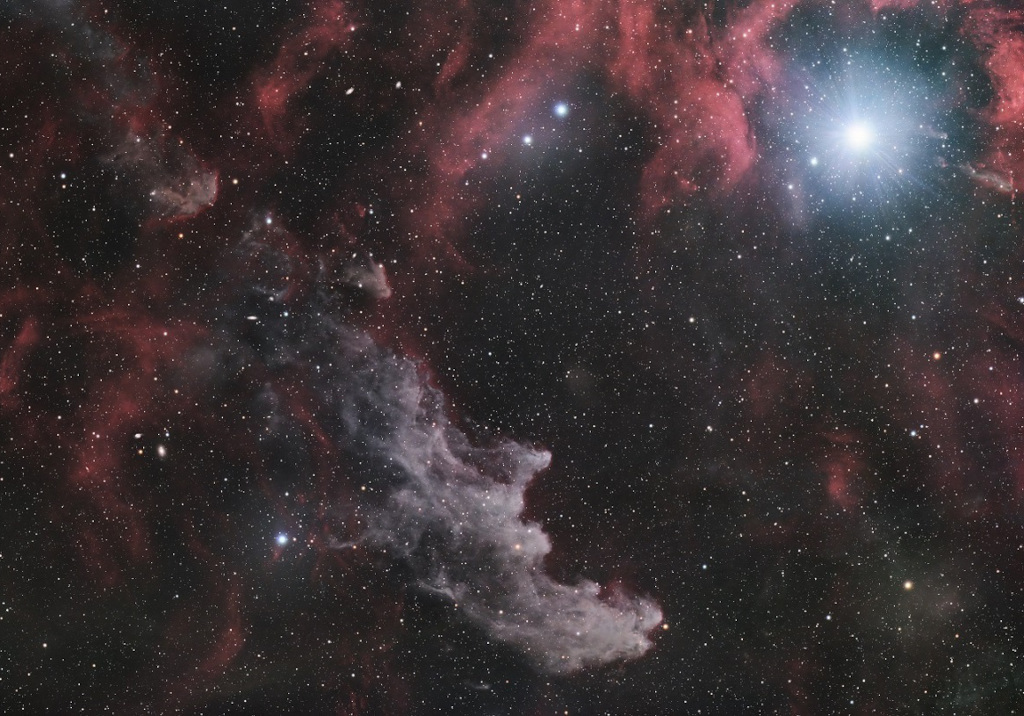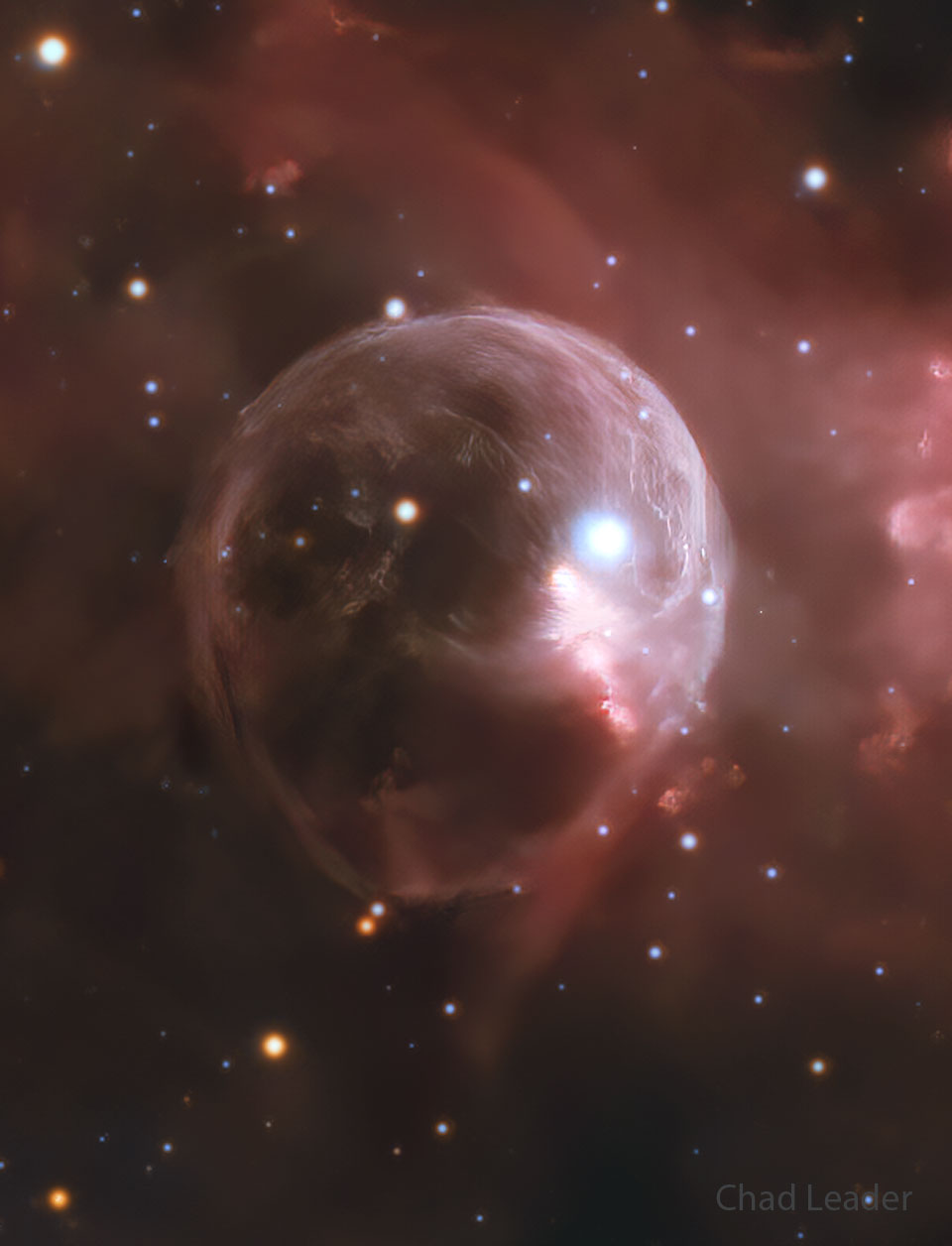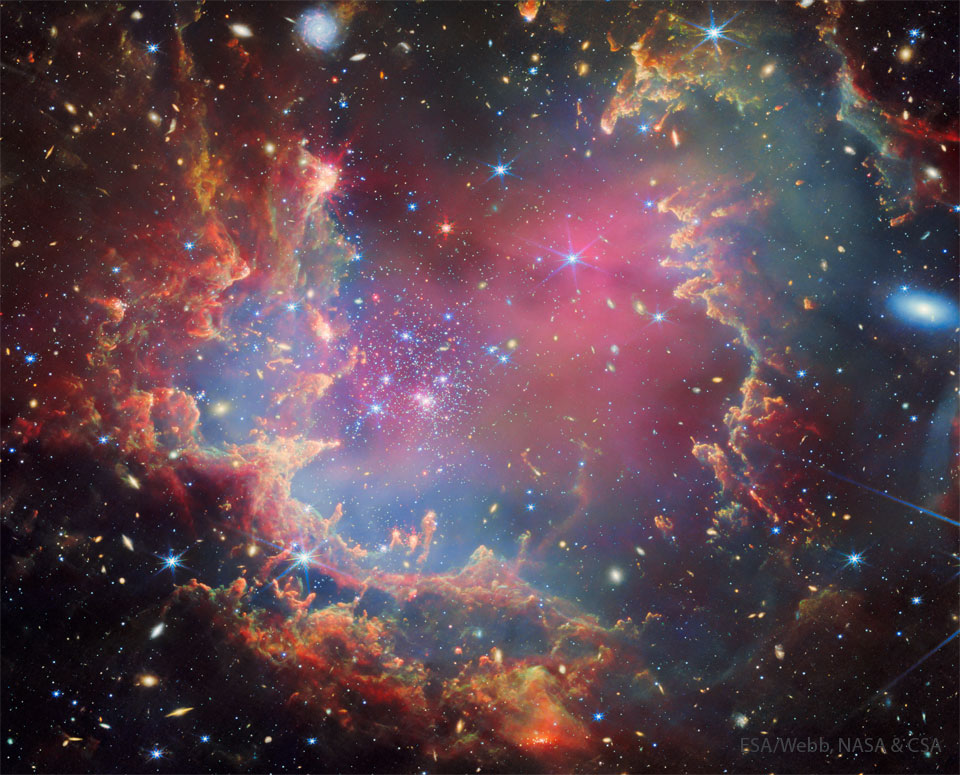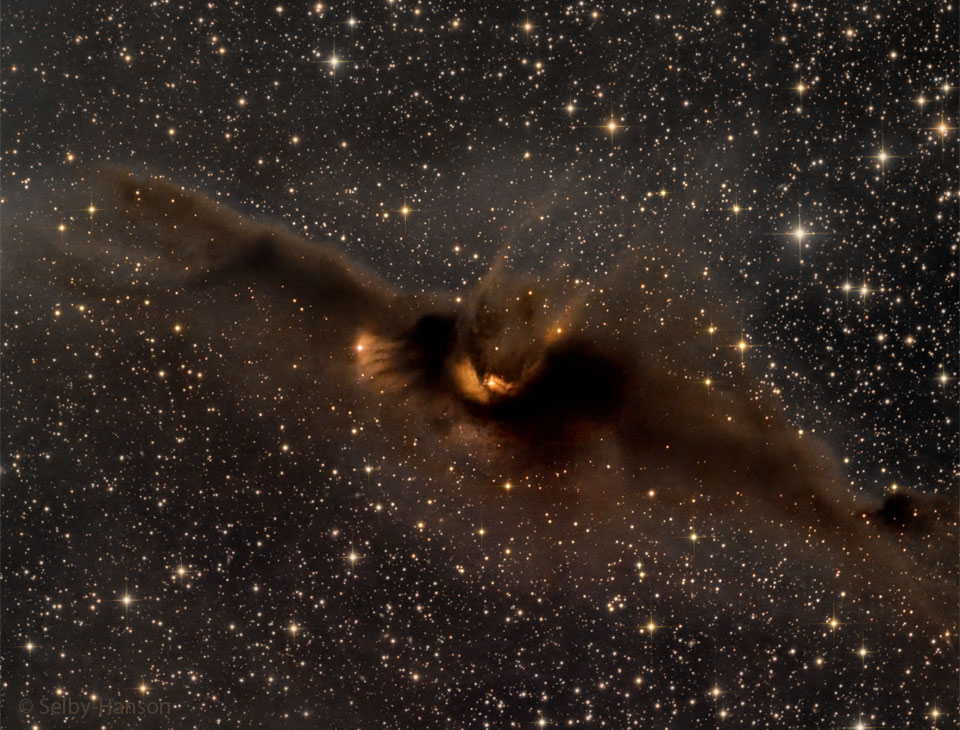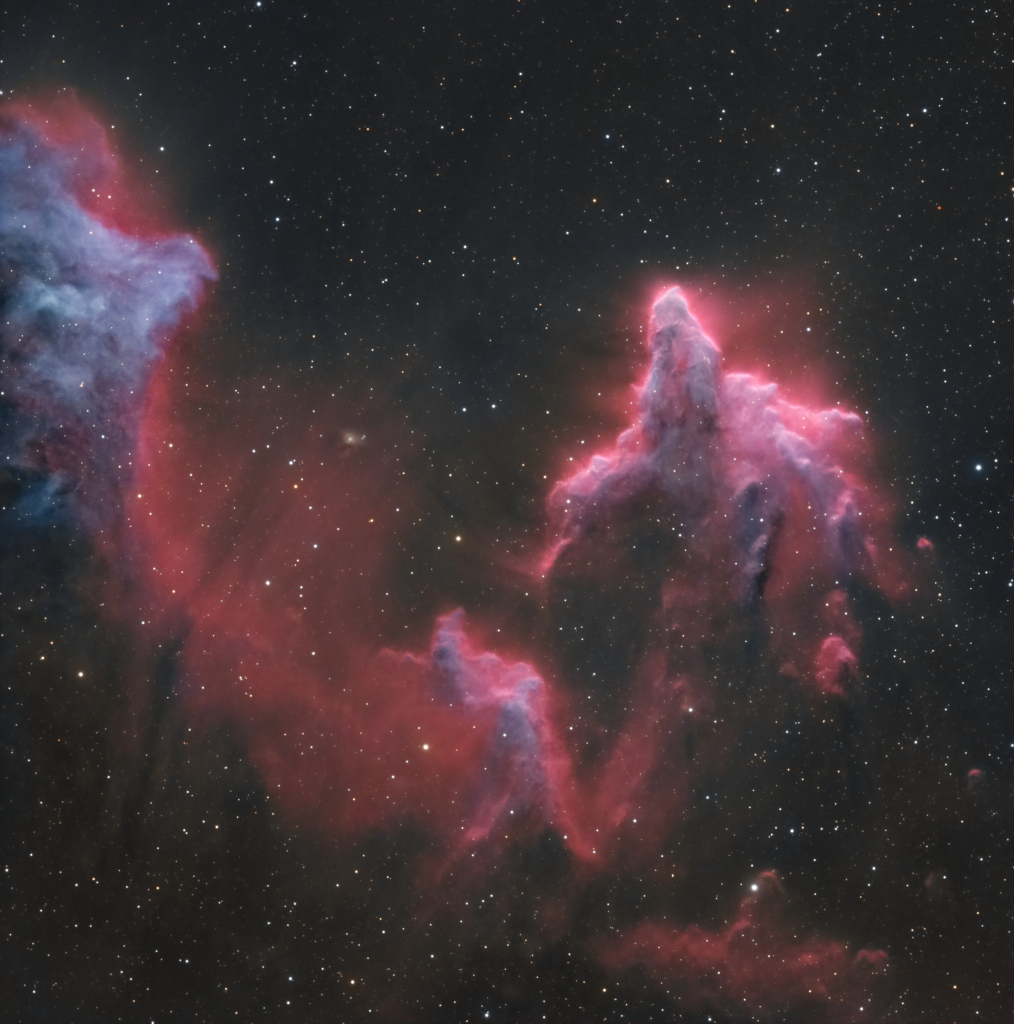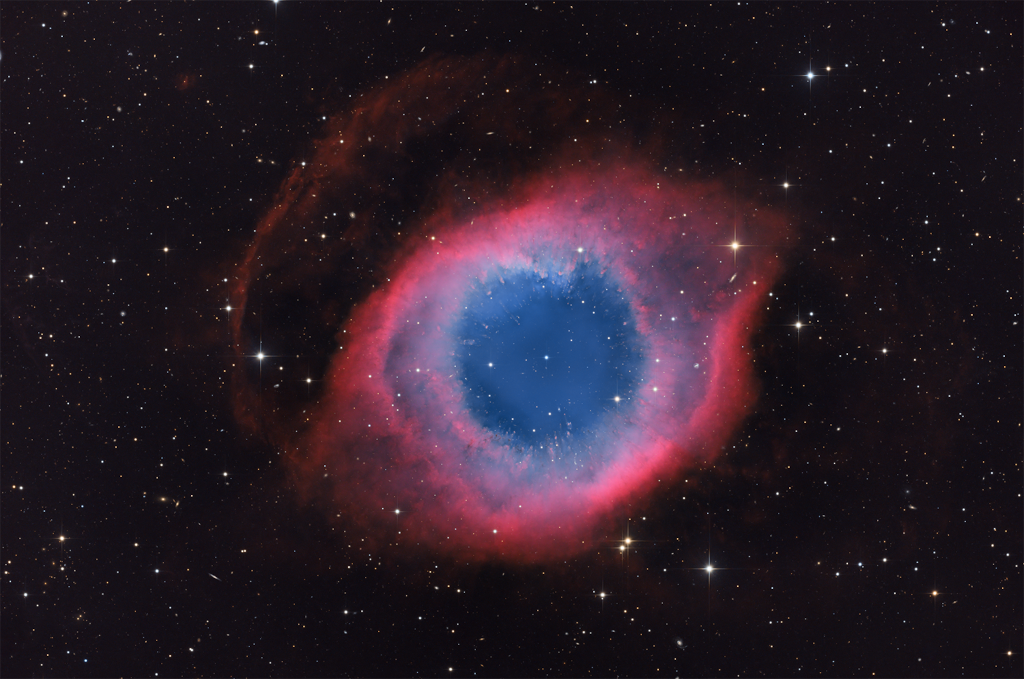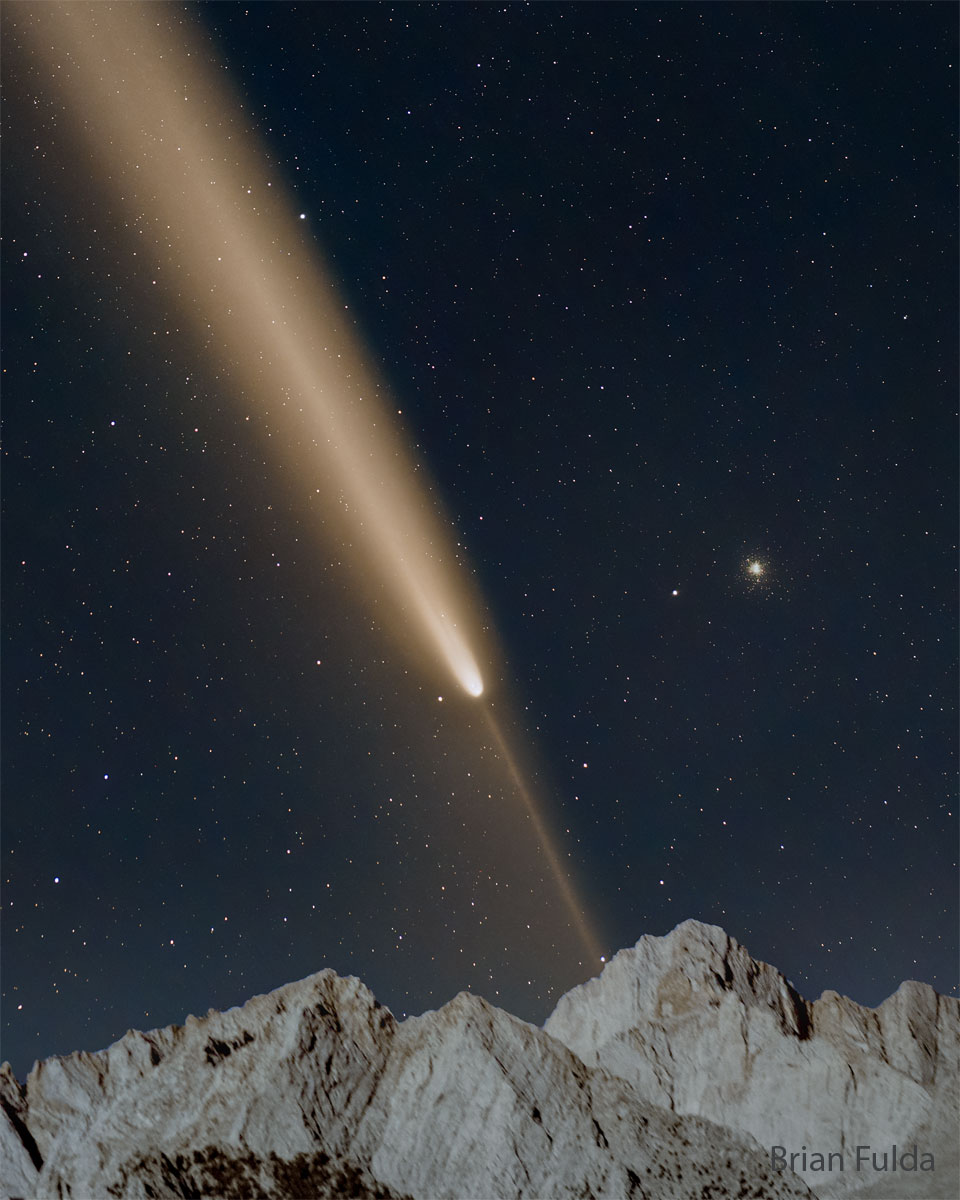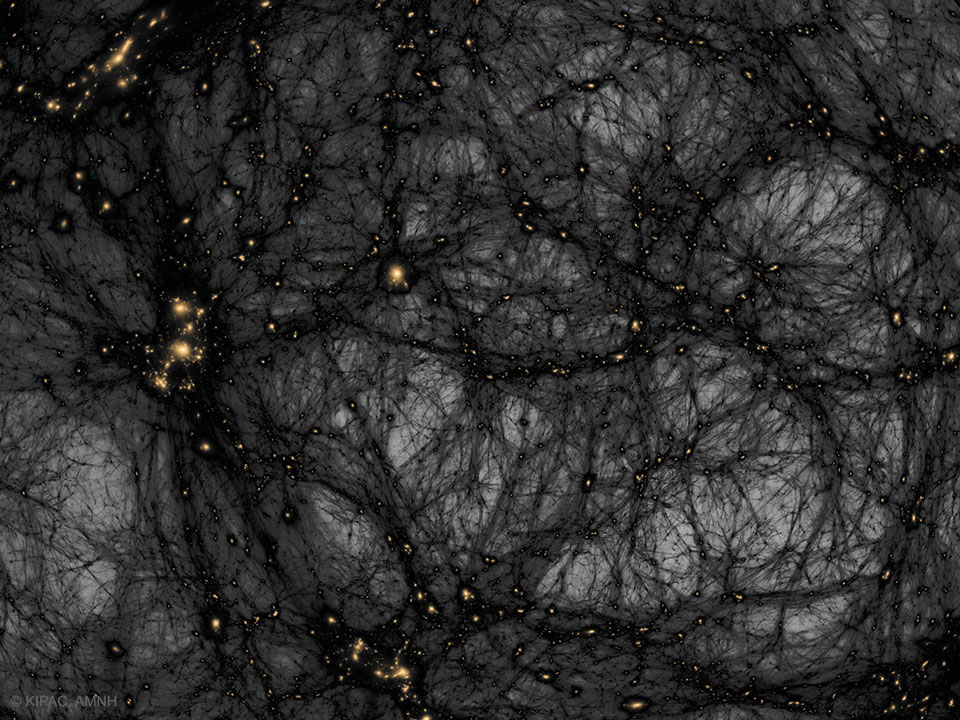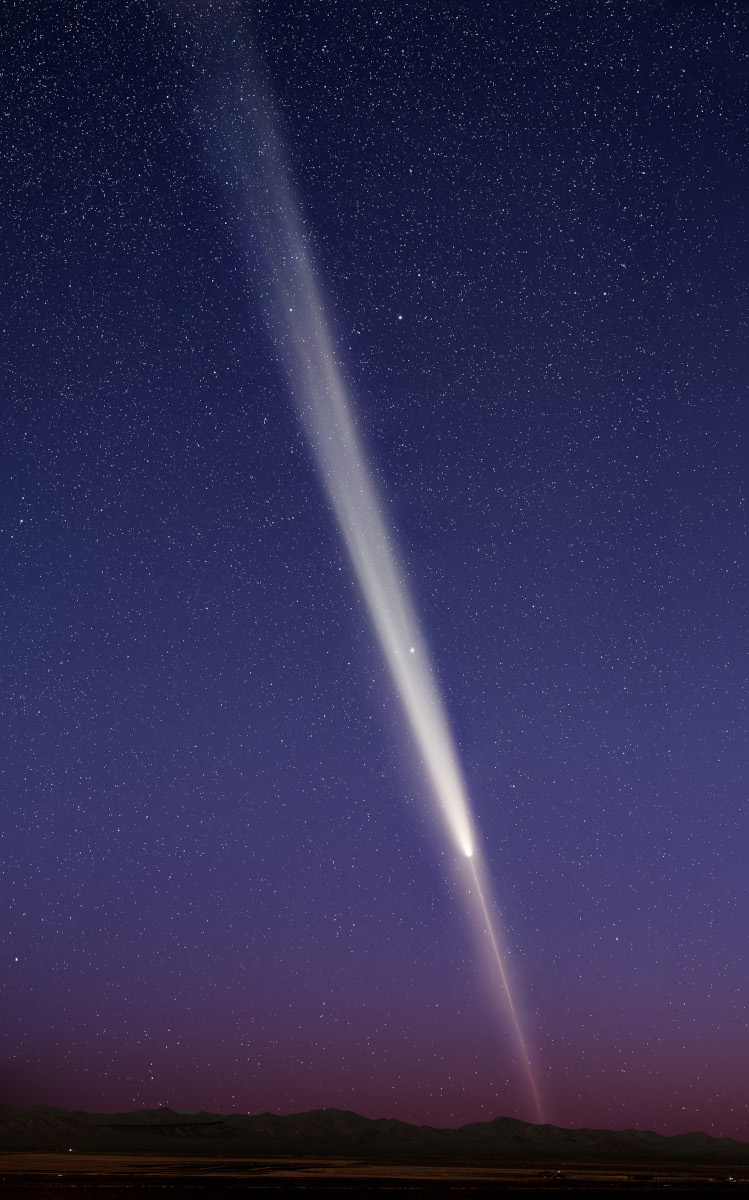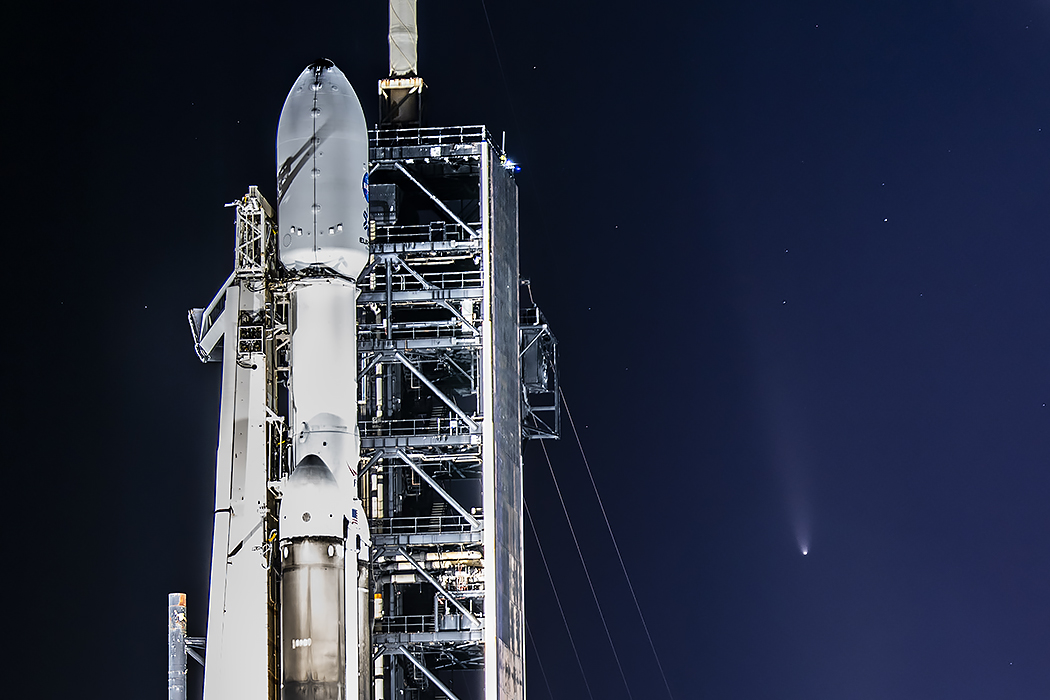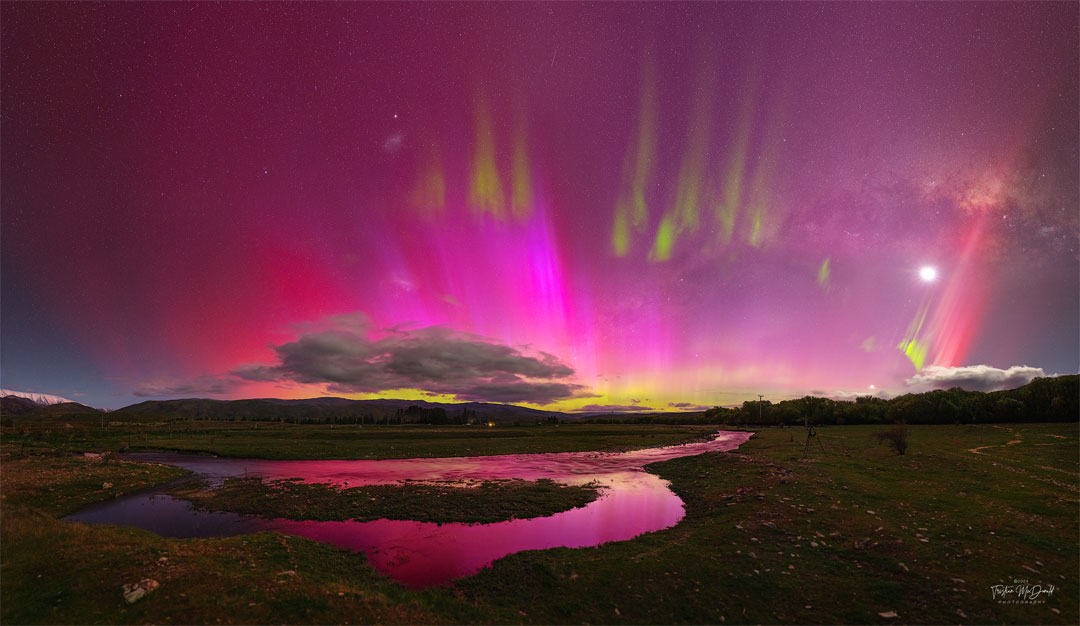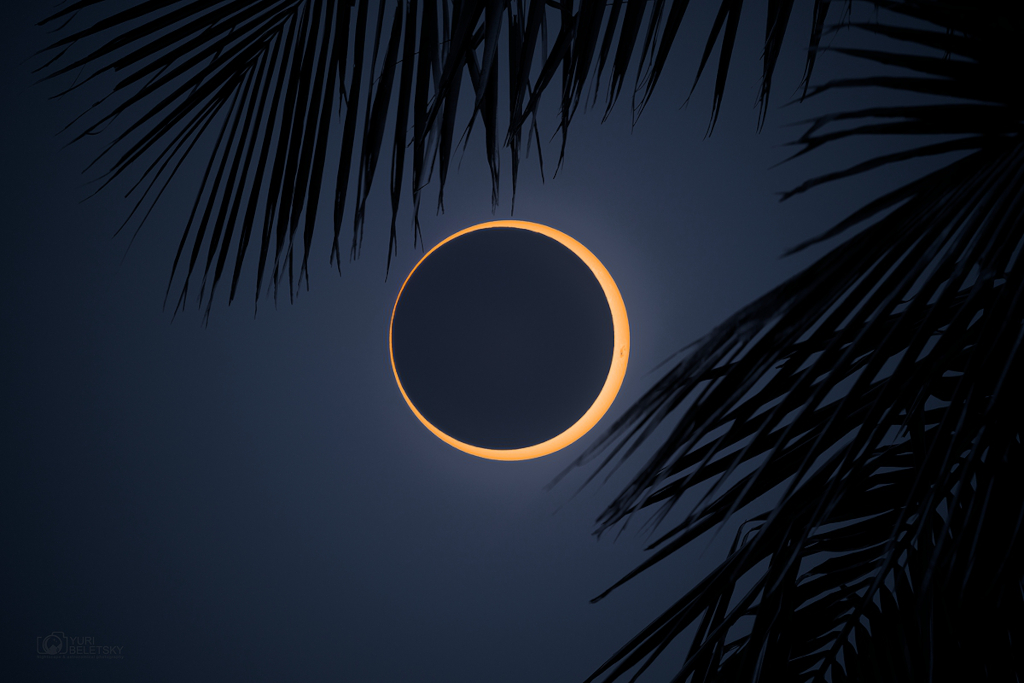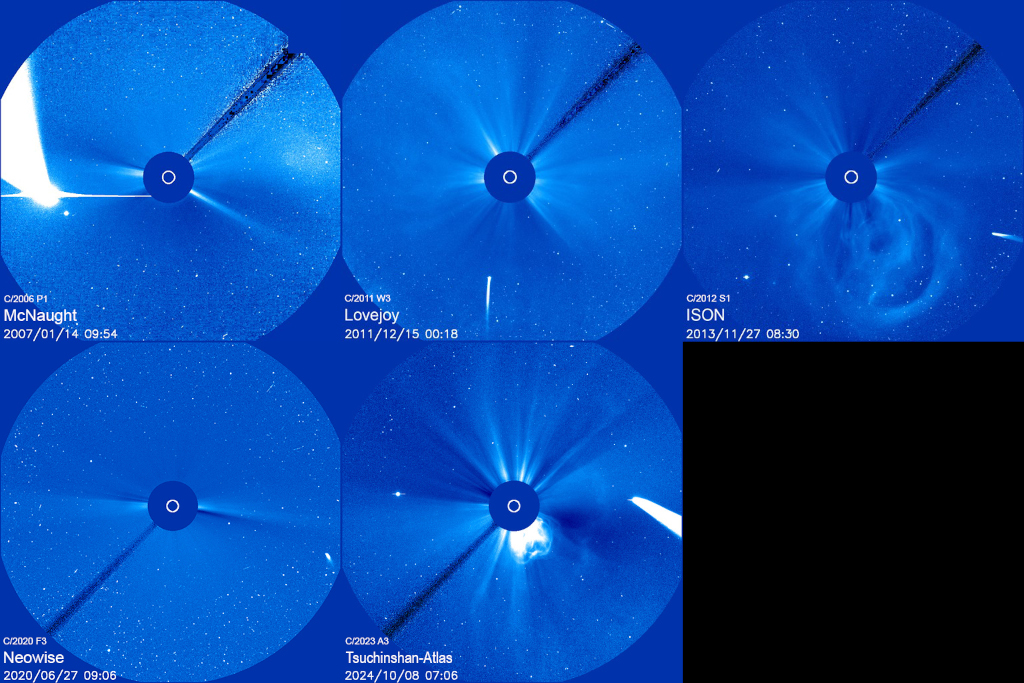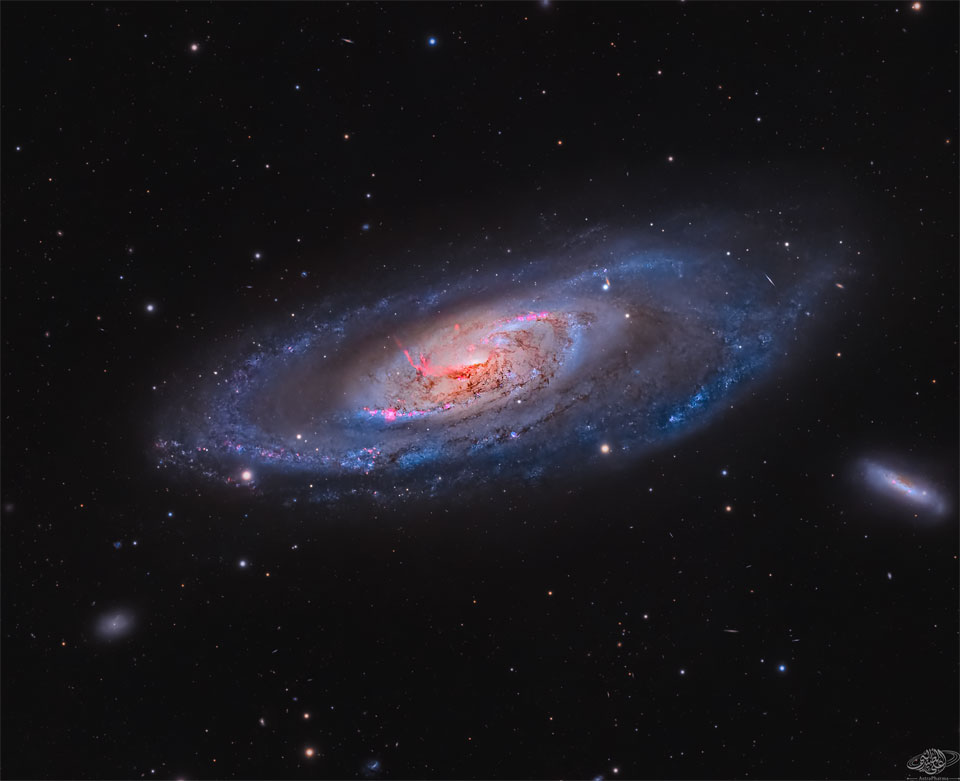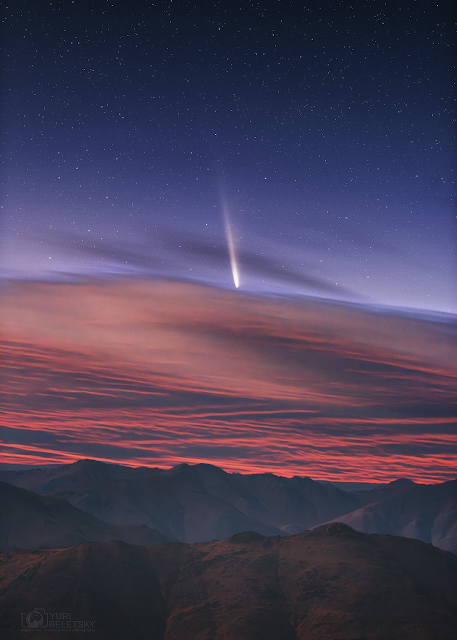Nombre total de pages vues
31/10/2024
VILLES BIONIQUES DU FUTUR - Lilypad : une ville flottante pour des mers qui montent
ASTRONOMY - Rigel and the Witch Head Nebula
Image Credit & Copyright: Simone Curzi
Explanation: By starlight, this eerie visage shines in the dark with a crooked profile evoking its popular name, the Witch Head Nebula. In fact, this entrancing telescopic portrait gives the impression that a witch has fixed her gaze on Orion's bright supergiant star Rigel. More formally known as IC 2118, the Witch Head Nebula spans about 50 light-years and is composed of interstellar dust grains reflecting Rigel's starlight. The color of the Witch Head Nebula is caused not only by Rigel's intense blue light, but because the dust grains scatter blue light more efficiently than red. The same physical process causes Earth's daytime sky to appear blue, although the scatterers in Earth's atmosphere are molecules of nitrogen and oxygen. Rigel and this dusty cosmic crone are about 800 light-years away. You may still see a few witches in your neighborhood tonight though, so have a safe and Happy Halloween!
30/10/2024
VILLES BIONIQUES DU FUTUR - Physalia : un vaisseau-amiral pour la bataille de l’eau
ASTRONOMY - NGC 7635: The Bubble Nebula
2024 October 30
Credit & Copyright: Chad Leader
Explanation: What created this huge space bubble? Blown by the wind from a star, this tantalizing, head-like apparition is cataloged as NGC 7635, but known simply as the Bubble Nebula. The featured striking view utilizes a long exposure to reveal the intricate details of this cosmic bubble and its environment. Although it looks delicate, the 10 light-year diameter bubble offers evidence of violent processes at work. Seen here above and right of the Bubble's center, a bright hot star is embedded in the nebula's reflecting dust. A fierce stellar wind and intense radiation from the star, which likely has a mass 10 to 20 times that of the Sun, has blasted out the structure of glowing gas against denser material in a surrounding molecular cloud. The intriguing Bubble Nebula lies a mere 11,000 light-years away toward the boastful constellation Cassiopeia.
29/10/2024
LES NUAGES DIEUX DU CIEL - La formation du nuage lenticulaire
ASTRONOMY - NGC 602: Stars Versus Pillars from Webb
Credit: ESA/Webb, NASA & CSA, P. Zeidler, E. Sabbi, A. Nota, M. Zamani (ESA/Webb)
Explanation: The stars are destroying the pillars. More specifically, some of the newly formed stars in the image center are emitting light so energetic that is evaporating the gas and dust in the surrounding pillars. Simultaneously, the pillars themselves are still trying to form new stars. The whole setting is the star cluster NGC 602, and this new vista was taken by the Webb Space Telescope in multiple infrared colors. In comparison, a roll-over image shows the same star cluster in visible light, taken previously by the Hubble Space Telescope. NGC 602 is located near the perimeter of the Small Magellanic Cloud (SMC), a small satellite galaxy of our Milky Way galaxy. At the estimated distance of the SMC, the featured picture spans about 200 light-years. A tantalizing assortment of background galaxies are also visible -- mostly around the edges -- that are at least hundreds of millions of light-years beyond.
28/10/2024
VILLES BIONIQUES DU FUTUR - Coral Reef : un nouveau village pour Haïti
ASTRONOMY - A Glowing River over France
2024 October 28
Credit & Copyright: Louis LEROUX-GÉRÉ
Explanation: Sometimes a river of hot gas flows over your head. In this case the river created a Strong Thermal Emission Velocity Enhancement (STEVE) that glowed bright red, white, and pink. Details of how STEVEs work remain a topic of research, but recent evidence holds that their glow results from a fast-moving river of hot ions flowing over a hundred kilometers up in the Earth's atmosphere: the ionosphere. The more expansive dull red glow might be related to the flowing STEVE, but alternatively might be a Stable Auroral Red (SAR) arc, a more general heat-related glow. The featured picture, taken earlier this month in Côte d'Opale, France, is a wide-angle digital composite made as the STEVE arc formed nearly overhead. Although the apparition lasted only a few minutes, this was long enough for the quick-thinking astrophotographer to get in the picture -- can you find him?
27/10/2024
ASTRONOMY - LDN 43: The Cosmic Bat Nebula
2024 October 27
Credit & Copyright: Mark Hanson and Mike Selby; Text: Michelle Thaller (NASA's GSFC)
Explanation: What is the most spook-tacular nebula in the galaxy? One contender is LDN 43, which bears an astonishing resemblance to a vast cosmic bat flying amongst the stars on a dark Halloween night. Located about 1400 light years away in the constellation Ophiuchus, this molecular cloud is dense enough to block light not only from background stars, but from wisps of gas lit up by the nearby reflection nebula LBN 7. Far from being a harbinger of death, this 12-light year-long filament of gas and dust is actually a stellar nursery. Glowing with eerie light, the bat is lit up from inside by dense gaseous knots that have just formed young stars.
26/10/2024
VILLES BIONIQUES DU FUTUR - Dragonfly : un projet bionique pour New York
ASTRONOMY - Phantoms in Cassiopeia
2024 October 26
Image Credit & Copyright: Christophe Vergnes, Hervé Laur
Explanation: These brightly outlined flowing shapes look ghostly on a cosmic scale. A telescopic view toward the constellation Cassiopeia, the colorful skyscape features the swept-back, comet-shaped clouds IC 59 (left) and IC 63. About 600 light-years distant, the clouds aren't actually ghosts. They are slowly disappearing though, under the influence of energetic radiation from hot, luminous star gamma Cas. Gamma Cas is physically located only 3 to 4 light-years from the nebulae and lies just above the right edge of the frame. Slightly closer to gamma Cas, IC 63 is dominated by red H-alpha light emitted as hydrogen atoms ionized by the hot star's ultraviolet radiation recombine with electrons. Farther from the star, IC 59 shows less H-alpha emission but more of the characteristic blue tint of dust reflected star light. The field of view spans over 1 degree or 10 light-years at the estimated distance of the interstellar apparitions.
24/10/2024
ASTRONOMY - NGC 7293: The Helix Nebula
2024 October 24
Image Credit & Copyright: Patrick Winkler
Explanation: A mere seven hundred light years from Earth toward the constellation Aquarius, a star is dying. The once sun-like star's last few thousand years have produced the Helix Nebula. Also known as NGC 7293, the cosmic Helix is a well studied and nearby example of a Planetary Nebula, typical of this final phase of stellar evolution. Combining narrow band data from emission lines of hydrogen atoms in red and oxygen atoms in blue-green hues, this deep image shows tantalizing details of the Helix, including its bright inner region about 3 light-years across. The white dot at the Helix's center is this Planetary Nebula's hot, dying central star. A simple looking nebula at first glance, the Helix is now understood to have a surprisingly complex geometry.
23/10/2024
ASTRONOMY - Caught
2024 October 23
Credit & Copyright: SpaceX
Explanation: What if a rocket could return to its launch tower -- and be caught? This happened for the first time 10 days ago, after a SpaceX Starship rocket blasted off from its pad in Boca Chica, Texas, USA. Starship then split, as planned, with its upper stage landing in the Pacific Ocean. The big difference was the lower stage, Super Heavy Booster 12, was caught by its launch tower about 7 minutes later. Catching a rocket for reuse is a new and innovative way to help reduce the cost of rocket flight by making rockets more easily reusable. Starship rockets may be used by NASA in the future to send spacecraft to Earth orbit, the Moon, and even other planets.
22/10/2024
ASTRONOMY -M16: Pillars of Star Creation
Image Credit: NASA, ESA, CSA, STScI; Processing: Diego Pisano
Explanation: These dark pillars may look destructive, but they are creating stars. This pillar-capturing picture of the Eagle Nebula combines visible light exposures taken with the Hubble Space Telescope with infrared images taken with the James Webb Space Telescope to highlight evaporating gaseous globules (EGGs) emerging from pillars of molecular hydrogen gas and dust. The giant pillars are light years in length and are so dense that interior gas contracts gravitationally to form stars. At each pillar's end, the intense radiation of bright young stars causes low density material to boil away, leaving stellar nurseries of dense EGGs exposed. The Eagle Nebula, associated with the open star cluster M16, lies about 7000 light years away.
21/10/2024
ASTRONOMY - Comet Tsuchinshan-ATLAS over California
2024 October 21
Credit & Copyright: Brian Fulda
MUSIC - Antonio Vivaldi : Concert pour deux trompettes en do majeur
20/10/2024
LES NUAGES DIEUX DU CIEL - Un cirrus en forme de squelette de poisson (cirrus fibratus vertebratus)
ASTRONOMY - Dark Matter in a Simulated Universe
2024 October 20
Illustration Credit & Copyright: Tom Abel & Ralf Kaehler (KIPAC, SLAC), AMNH
Explanation: Is our universe haunted? It might look that way on this dark matter map. The gravity of unseen dark matter is the leading explanation for why galaxies rotate so fast, why galaxies orbit clusters so fast, why gravitational lenses so strongly deflect light, and why visible matter is distributed as it is both in the local universe and on the cosmic microwave background. The featured image from the American Museum of Natural History's Hayden Planetarium Space Show Dark Universe highlights one example of how pervasive dark matter might haunt our universe. In this frame from a detailed computer simulation, complex filaments of dark matter, shown in black, are strewn about the universe like spider webs, while the relatively rare clumps of familiar baryonic matter are colored orange. These simulations are good statistical matches to astronomical observations. In what is perhaps a scarier turn of events, dark matter -- although quite strange and in an unknown form -- is no longer thought to be the strangest source of gravity in the universe. That honor now falls to dark energy, a more uniform source of repulsive gravity that seems to now dominate the expansion of the entire universe.
19/10/2024
VILLES BIONIQUES DU FUTUR - Coral Reef : logements aux points de vue multiples
ASTRONOMY - Comet Tsuchinshan-ATLAS Flys Away
2024 October 19
Image Credit & Copyright: Xingyang Cai
Explanation: These six panels follow daily apparitions of comet C/2023 A3 Tsuchinshan-ATLAS as it moved away from our fair planet during the past week. The images were taken with the same camera and lens at the indicated dates and locations from California, planet Earth. At far right on October 12 the visitor from the distant Oort cloud was near its closest approach, some 70 million kilometers (about 4 light-minutes) away. Its bright coma and long dust tail were close on the sky to the setting Sun but still easy to spot against a bright western horizon. Over the following days, the outbound comet steadily climbs above the ecliptic and north into the darker western evening sky, but begins to fade from view. Crossing the Earth's orbital plane around October 14, Tsuchinshan-ATLAS exhibits a noticeable antitail extended toward the western horizon. Higher in the evening sky at sunset by October 17 (far left) the comet has faded and reached a distance of around 77 million kilometers from planet Earth. Hopefully you enjoyed some of Tsuchinshan-ATLAS's bid to become the best comet of 2024. This comet's initial orbital period estimates were a mere 80,000 years, but in fact it may never return to the inner Solar System.
18/10/2024
ASTRONOMY - Most of Comet Tsuchinshan-ATLAS
2024 October 18
Image Credit & Copyright: Adam Block
Explanation: On October 14 it was hard to capture a full view of Comet C/2023 A3 Tsuchinshan-ATLAS. Taken after the comet's closest approach to our fair planet, this evening skyview almost does though. With two telephoto frames combined, the image stretches about 26 degrees across the sky from top to bottom, looking west from Gates Pass, Tucson, Arizona. Comet watchers that night could even identify globular star cluster M5 and the faint apparition of periodic comet 13P Olbers near the long the path of Tsuchinshan-ATLAS's whitish dust tail above the bright comet's coma. Due to perspective as the Earth is crossing the comet's orbital plane, Tsuchinshan-ATLAS also has a pronounced antitail. The antitail is composed of dust previously released and fanning out away from the Sun along the comet's orbit, visible as a needle-like extension below the bright coma toward the rugged western horizon.
17/10/2024
VILLES BIONIQUES DU FUTUR - Les galets de Shenzen : un avant-goût de la cité du futur
INVENTIONS A L'HORIZON 2050 - Les vêtements en spray révolutionneront l'habillement et la santé
LES NUAGES DIEUX DU CIEL - Paysage avec cumulus
ASTRONOMY - The Clipper and the Comet
2024 October 17
Image Credit & Copyright: Ben Cooper (Launch Photography)
Explanation: NASA's Europa Clipper is now headed toward an ocean world beyond Earth. The large spacecraft is tucked into the payload fairing atop the Falcon Heavy rocket in this photo, taken at Kennedy Space Center the day before the mission's successful October 14 launch. Europa Clipper's interplanetary voyage will first take it to Mars, then back to Earth, and then on to Jupiter on gravity assist trajectories that will allow it to enter orbit around Jupiter in April 2030. Once orbiting Jupiter, the spacecraft will fly past Europa 49 times, exploring a Jovian moon with a global subsurface ocean that may have conditions to support life. Posing in the background next to the floodlit rocket is Comet Tsuchinsan-ATLAS, about a day after the comet's closest approach to Earth. A current darling of evening skies, the naked-eye comet is a vistor from the distant Oort cloud
16/10/2024
LES NUAGES DIEUX DU CIEL - Stratocumulus au parc national des Arches (États-Unis)
ASTRONOMY - Colorful Aurora over New Zealand
2024 October 16
Image Credit & Copyright: Tristian McDonald
Explanation: Sometimes the night sky is full of surprises. Take the sky over Lindis Pass, South Island, New Zealand one-night last week. Instead of a typically calm night sky filled with constant stars, a busy and dynamic night sky appeared. Suddenly visible were pervasive red aurora, green picket-fence aurora, a red SAR arc, a STEVE, a meteor, and the Moon. These outshone the center of our Milky Way Galaxy and both of its two satellite galaxies: the LMC and SMC. All of these were captured together on 28 exposures in five minutes, from which this panorama was composed. Auroras lit up many skies last week, as a Coronal Mass Ejection from the Sun unleashed a burst of particles toward our Earth that created colorful skies over latitudes usually too far from the Earth's poles to see them. More generally, night skies this month have other surprises, showing not only auroras -- but comets.
15/10/2024
VILLES BIONIQUES DU FUTUR - L’arche bionique de Taiwan : la nature à la verticale
LES NUAGES DIEUX DU CIEL - Qu'est-ce qu'un cirrus ?
ASTRONOMY - Animation: Comet Tsuchinshan-ATLAS Tails Prediction
2024 October 15
Credit & Copyright: Nico Lefaudeux
Explanation: How bright and strange will the tails of Comet Tsuchinshan-ATLAS become? The comet has brightened dramatically over the few weeks as it passed its closest to the Sun and, just three days ago, passed its closest to the Earth. C/2023 A3 (Tsuchinshan–ATLAS) became of the brightest comets of the past century over the past few days, but was unfortunately hard to see because it was so nearly superposed on the Sun. As the comet appears to move away from the Sun, it is becoming a remarkable sight -- but may soon begin to fade. The featured animated video shows how the comet's tails have developed, as viewed from Earth, and gives one prediction about how they might further develop. As shown in the video, heavier parts of the dust tail that trails the comet have begun to appear to point in nearly the opposite direction from lighter parts of the dust tail as well as the comet's ion tail, the blue tail that is pushed directly out from the Sun by the solar wind.
14/10/2024
INVENTIONS A L'HORIZON 2050 - Certaines plantes deviendront éternelles
ASTRONOMY - Comet Tsuchinshan-ATLAS Over the Lincoln Memorial
2024 October 14
Credit & Copyright: Brennan Gilmore
Explanation: Go outside at sunset tonight and see a comet! C/2023 A3 (Tsuchinshan–ATLAS) has become visible in the early evening sky in northern locations to the unaided eye. To see the comet, look west through a sky with a low horizon. If the sky is clear and dark enough, you will not even need binoculars -- the faint tail of the comet should be visible just above the horizon for about an hour. Pictured, Comet Tsuchinshan-ATLAS was captured two nights ago over the Lincoln Memorial monument in Washington, DC, USA. With each passing day at sunset, the comet and its changing tail should be higher and higher in the sky, although exactly how bright and how long its tails will be can only be guessed.
13/10/2024
ASTRONOMY - Aurora Timelapse Over Italian Alps
2024 October 13
Video Credit & Copyright: Cristian Bigontina
Explanation: Did you see last night's aurora? This question was relevant around much of the world a few days ago because a powerful auroral storm became visible unusually far from the Earth's poles. The cause was a giant X-class solar flare on Tuesday that launched energetic electrons and protons into the Solar System, connecting to the Earth via our planet's magnetic field. A red glow of these particles striking oxygen atoms high in Earth's atmosphere pervades the frame, while vertical streaks dance. The featured video shows a one-hour timelapse as seen from Cortina d'Ampezzo over Alps Mountain peaks in northern Italy. Stars from our Milky Way Galaxy dot the background while streaks from airplanes and satellites punctuate the foreground. The high recent activity of our Sun is likely to continue to produce picturesque auroras over Earth during the next year or so.
12/10/2024
LES NUAGES DIEUX DU CIEL - Stratocumulus au Nouveau-Mexique
ASTRONOMY - Northern Lights West Virginia
Image Credit & Copyright: Jonathan Eggleston
Explanation: A gravel country lane gently winds through this colorful rural night skyscape. Captured from Monroe County in southern West Virginia on the evening of October 10, the starry sky above is a familiar sight. Shimmering curtains of aurora borealis or northern lights definitely do not make regular appearances here, though. Surprisingly vivid auroral displays were present on that night at very low latitudes around the globe, far from their usual northern and southern high latitude realms. The extensive auroral activity was evidence of a severe geomagnetic storm triggered by the impact of a coronal mass ejection (CME), an immense magnetized cloud of energetic plasma. The CME was launched toward Earth from the active Sun following a powerful X-class solar flare.
11/10/2024
MUSIQUE - Alumni Orchestra - Jacques Offenbach - Ouverture de la Belle Hélène
LES NUAGES DIEUX DU CIEL - Le cumulus congestus : un nuage porteur d'averses
ASTRONOMY - Ring of Fire over Easter Island
2024 October 11
Image Credit & Copyright: Yuri Beletsky (Carnegie Las Campanas Observatory, TWAN)
Explanation: The second solar eclipse of 2024 began in the Pacific. On October 2nd the Moon's shadow swept from west to east, with an annular eclipse visible along a narrow antumbral shadow path tracking mostly over ocean, making its only major landfall near the southern tip of South America, and then ending in the southern Atlantic. The dramatic total annular eclipse phase is known to some as a ring of fire. Also tracking across islands in the southern Pacific, the Moon's antumbral shadow grazed Easter Island allowing denizens to follow all phases of the annular eclipse. Framed by palm tree leaves this clear island view is a stack of two images, one taken with and one taken without a solar filter near the moment of the maximum annular phase. The New Moon's silhouette appears just off center, though still engulfed by the bright disk of the active Sun.
10/10/2024
MUSIQUE - Mikko Franck et l'Orchestre Philarmonique de Radio France - Maurice Ravel - Nuit
SANTé/MEDECINE - ALIMENTATION - NUTRIMENTS - Les protéines : un source immédiate d'énergie
ASTRONOMY - Five Bright Comets from SOHO
2024 October 10
Image Compilation Credit: Tunc Tezel (TWAN)
Explanation: Five bright comets are compared in these panels, recorded by a coronograph on board the long-lived, sun-staring SOHO spacecraft. Arranged chronologically all are recognizable by their tails streaming away from the Sun at the center of each field of view, where a direct view of the overwhelmingly bright Sun is blocked by the coronagraph's occulting disk. Each comet was memorable for earthbound skygazers, starting at top left with Comet McNaught, the 21st century's brightest comet (so far). C/2023 A3 Tsuchinshan-Atlas, approaching its perihelion with the active Sun at bottom center, has most recently grabbed the attention of comet watchers around the globe. By the end of October 2024, the blank 6th panel may be filled with bright sungrazer comet C/2024 S1 Atlas. ... or not.
09/10/2024
LES NUAGES DIEUX DU CIEL - Les cumulus n'empêchent pas le soleil de briller
INVENTIONS A L'HORIZON 2050 - L'avion sera silencieux et économe
ASTRONOMY - M106: A Spiral Galaxy with a Strange Center
2024 October 9
Image Credit & Copyright: Ali Al Obaidly
Explanation: What's happening at the center of spiral galaxy M106? A swirling disk of stars and gas, M106's appearance is dominated by blue spiral arms and red dust lanes near the nucleus, as shown in the featured image taken from the Kuwaiti desert. The core of M106 glows brightly in radio waves and X-rays where twin jets have been found running the length of the galaxy. An unusual central glow makes M106 one of the closest examples of the Seyfert class of galaxies, where vast amounts of glowing gas are thought to be falling into a central massive black hole. M106, also designated NGC 4258, is a relatively close 23.5 million light years away, spans 60 thousand light years across, and can be seen with a small telescope towards the constellation of the Hunting Dogs (Canes Venatici).
08/10/2024
ASTRONOMIE - Premières photos de la comète Tsuchinshan-Atlas
ASTRONOMY - Orion and the Ocean of Storms
2025 December 13 Orion and the Ocean of Storms Image Credit: NASA , Artemis 1 Explanation: On December 5, 2022, a camera on board the u...

-
2022 September 26 All the Water on Planet Earth Illustration Credit: Jack Cook, Adam Nieman, Woods Hole Oceanographic Institution ; Data ...
-
2025 May 11 The Surface of Venus from Venera 14 Image Credit: Soviet Planetary Exploration Program , Venera 14 ; Processing & Copyri...

